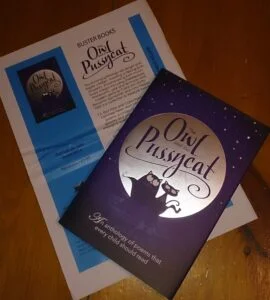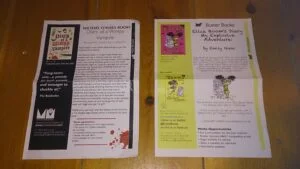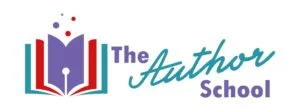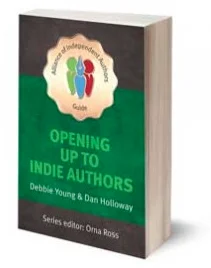Debbie Young is currently writing a new ALLi guidebook about working with bookstores
It's standard practice in the publishing trade to produce what's usually referred to as an Advance Information sheet in the run-up to a new book's launch. In this post, we'll explain what AI sheets are, how they're used, and why they're also a valuable book marketing tool for self-published books. We'll also help you produce your own and use them to best advantage. This is just one helpful topic that will be tackled in a new ALLi guidebook to be published later this year, “How to Get Your Self-published Book into Bookstores”.
In traditional publishing, most of the marketing activity for a book is generally condensed and front-loaded. After a very long planning period – astonishingly long to indie authors used to launching their own books within a relatively short time-frame – it's usually over and done within a year of a book's publication date, and often much less. Part of the preparation process is the production of an Advance Information (AI) sheet.
What are AI Sheets Anyway?

It should be easy to recognise the book from its AI sheet
The AI sheet is a single sheet of A4 paper, printed one sided, in colour or black and white – ideally colour, but sometimes mono for the sake of economy. The AI sheet has three main uses:
- To entice early reviewers to agree to read and review a book (the actual book may then be sent only to those who agree in advance to review it)
- To accompany ARCs, making it super-easy for the reviewer to include the correct information in any review he writes up
- To encourage and enable booksellers to place orders easily by providing a persuasive sales pitch coupled with practical details of how to order
As well as being distributed to reviewers and booksellers, AI sheets may also be made available as downloads from the Press and Publicity sections of publishers' websites. This enables any potential reviewer or stockist to print off one for their own use at any time.
The typical AI sheet includes a cover image, title and author name, plus a brief overview of a book, an author bio, some testimonials, and technical data (ISBN, price, launch date, formats, etc), plus contact details in case of query.

Two AI sheets I've received with review copies from children's publishers
All this information is presented in an orderly, logical manner to provide an at-a-glance summary of the features and benefits of a new book, in an attractive yet familiar and digestible form that busy reviewers and booksellers can absorb quickly and accurately. Bear in mind that many reviewers receive lots of offers of review copies, and when a publisher's rep visits a bookseller, he may be pitching dozens of books in a single visit, so brevity and directness are much appreciated.
Why Should Indie Authors Bother with AI Sheets?
They're useful for indie authors for the same purposes as for big publishers. Why should we operate any differently, when there is this tried-and-trusted formula for effective communication with reviewers and booksellers?
Offering an AI sheet also adds credibility to self-published books and small indie press imprints. Providing one to a prospective bookseller or reviewer is a clear indication that we understand how they operate and that we will be easy to work with.
It shows we speak the bookseller's language.
It shows we respect reviewers' time and needs.
What Do AI Sheets Cost?
Unlike so many other marketing materials, AI sheets cost next to nothing to produce and distribute. You can knock one up on your own computer, print it off on your own printer, and add it to your own author website, or, if you publish under an imprint, on that imprint's website – or indeed both. If you have a page for each of your books on your website, it's a matter of moments to add a download of the AI sheet as a clickable option. (One of my own marketing targets for this year is to set up a page per book on my website, complete with AI sheet download. I know it's going to take a while initially to prepare them all, but it'll be a great time-saver long-term.)
How to Create Your Own AI Sheet for a Self-published Book

Thanks to The Author School for sharing their templates here
So, how do you create your own? Don't worry, it's very straightforward and common sense.
To get you off to a flying start, ALLi Partner Member Helen Lewis, co-founder of The Author School and Director of Literally PR, has kindly offered to share Author School's template with ALLi members, which you can download below. It shows a typical layout and includes further tips on how to complete each section.
In addition to the key points for inclusion that I mentioned earlier, the Author School's template includes an author image. Not all publishers include the author image, judging from the AI sheets I've been sent as a reviewer. But for the indie author, I think adding a photo is a great idea, because it's more likely to be you taking your book into the store, and it's a great way of helping booksellers remember you and put the right face to the right name, further down the line.
Try to echo the style and font of your book on its AI sheet, at least for headlines and images, so that the two are a recognisable pair, like the examples in the pictures in this post. (I love the splash of blood as a fun detail on the Diary of a Wimpy Vampire one!) Keep the body copy in a common serif font, though, such as Times New Roman or Garamond, to make the information easy to read once it's caught the reviewer or bookseller's eye.

Featuring chapters on how to work more effectively with booksellers and reviewers
For More Information
For more information to help you build a better relationship with booksellers and reviewers, read the ALLi guidebook Opening Up to Indie Authors, (free to download for ALLi members, available to purchase via all the usual outlets for non-members). Look out also for a new addition to the handy ALLi series, How to Get Your Self-published Book into Bookstores, to be published in May of this year as part of our #Authors4Bookstores campaign.
OVER TO YOU If you already have AI sheets for your books, do you have more tips on how to make and use them effectively? We'd love to hear of your experience.
How to create and use a free and easy tool to help you market your #selfpublished book by @DebbieYoungBN #authors4bookstores Share on XRELATED POSTS
- ALLi Campaign – Introducing #Authors4Bookstores
- Chris Longmuir on Getting into Bookshops
- Bookstore Success for Australian Indie Author






[…] among other names, and it’s an important weapon in your marketing arsenal. As author Debbie Young writes on the ALLi blog, using an AIS, “shows we speak the bookseller’s language. It shows we respect reviewers’ […]
Thanks for the template Debbie, I’ve not seen one elsewhere. 🙂
[…] How to Create an Advance Information (AI) Sheet for a Self-published Book […]
[…] you are ready to publish, you will need to produce Advance Information Sheets to sell to bookstores across the UK. You can also send these sheets to journalists and bloggers in […]
[…] An Advanced Information Sheet is a one page CV of your book. It should contain all the necessary data linked to your book so that retailers can easily locate your book on the database and order. The AI normally gives basic bibliographic details, key selling points, a blurb, cover image, brief author information and (not least) ordering/availability details. Here is a great article about how to create an effective Advanced Information Sheet and why self-published authors should have one. Read here […]
Very informative Debbie, thank you.
[…] How to Create an Advance Information (AI) Sheet for a Self-published Book by Debbie Young […]
[…] Las copias ARC y las dummy suelen ir acompañadas de una hoja A4 que presenta el libro y sus datos fundamentales (How to create an AI sheet). […]
[…] How to Create an Advance Information (AI) Sheet for a Self-published Book by Debbie Young […]
Debbie,
Great post and thanks for the nice templates!
One question: What would you say are the key differences between an AI Sheet and a Sell Sheet? Or are they really the same thing?
Thanks!
William
[…] Source: How to Create an Advance Information (AI) Sheet for a Self-published Book […]
[…] How to Create an Advance Information (AI) Sheet for a Self-published Book https://selfpublishingadvice.org/?p=169910 […]
Thanks Helen and Debbie for this. Template will be so useful.
Thanks for the templates Debbie .. a great resource.